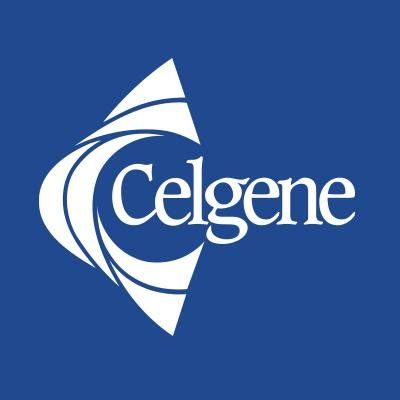预约演示
更新于:2025-05-07
Celgene Pty Ltd.
更新于:2025-05-07
概览
标签
其他疾病
免疫系统疾病
肿瘤
小分子化药
降解型分子胶
抗体融合蛋白
疾病领域得分
一眼洞穿机构专注的疾病领域
暂无数据
技术平台
公司药物应用最多的技术
暂无数据
靶点
公司最常开发的靶点
暂无数据
| 排名前五的药物类型 | 数量 |
|---|---|
| 小分子化药 | 3 |
| 降解型分子胶 | 3 |
| 抗体融合蛋白 | 1 |
关联
7
项与 Celgene Pty Ltd. 相关的药物作用机制 S1PR1调节剂 [+1] |
在研机构 |
最高研发阶段批准上市 |
首次获批国家/地区 美国 |
首次获批日期2020-03-25 |
作用机制 ACVR2B抑制剂 [+1] |
在研机构 |
在研适应症 |
非在研适应症- |
最高研发阶段批准上市 |
首次获批国家/地区 美国 |
首次获批日期2019-11-08 |
作用机制 CRBN调节剂 [+2] |
原研机构 |
最高研发阶段批准上市 |
首次获批国家/地区 美国 |
首次获批日期2013-02-08 |
2
项与 Celgene Pty Ltd. 相关的临床试验ACTRN12615000447550
A 2-stage Phase II study evaluating the safety and efficacy of combination pomalidomide and low dose dexamethasone therapy in patients with relapsed myeloma previously treated wtih lenalidomide maintenance post Autologous Stem Cell Transplant (LEOPARD follow-on study)
开始日期2015-06-08 |
申办/合作机构  Alfred Health Alfred Health [+1] |
ACTRN12616000777493
Safety and tolerability of lenalidomide consolidation post allogeneic stem cell transplant for patients with high risk multiple myeloma failing to achieve stringent Complete Response
开始日期2015-03-10 |
申办/合作机构  Alfred Health Alfred Health [+1] |
100 项与 Celgene Pty Ltd. 相关的临床结果
登录后查看更多信息
0 项与 Celgene Pty Ltd. 相关的专利(医药)
登录后查看更多信息
12
项与 Celgene Pty Ltd. 相关的文献(医药)2019-05-01·Research in Social and Administrative Pharmacy3区 · 医学
Consumer opinions on adverse events associated with medical devices
3区 · 医学
Article
作者: Fois, Romano ; McGarry, Theresa ; Tong, Vivien ; Aslani, Parisa ; Spagnardi, Sarah ; Cook, Jane ; Moore, Carter ; Chen, Timothy F ; Whitelock, Karen ; Hamrosi, Kim ; Peters, Rodney
2016-02-01·Advances in Therapy3区 · 医学
The Effectiveness of an Educational Brochure as a Risk Minimization Activity to Communicate Important Rare Adverse Events to Health-Care Professionals
3区 · 医学
Article
作者: Di Vito-Smith, Michelle ; Bester, Nicolette ; McGarry, Theresa ; Riffkin, Michael ; Bwire, Robert ; Pilot, Richard ; Kaehler, Stefan
2015-12-03·Blood
An Integrative Genomics Approach Uncovers the Basis of Resistance to AZA Therapy in MDS and CMML
作者: Wilson, Susan R. ; Lynch, Kevin ; Woll, Petter S. ; Thoms, Julie A.I. ; Huang, Yizhou ; Mufti, Ghulam J ; Kulasekararaj, Austin G. ; Hellstrom-Lindberg, Eva ; Pimanda, John E. ; Papaemmanuil, Elli ; Campbell, Peter J ; Kumari, Ashu ; Chandrakanthan, Vashe ; Galbraith, Sally ; Pellagatti, Andrea ; Wong, Jason W.H. ; Tobiasson, Magnus ; Tursky, Melinda L. ; Mackenzie, Karen Lee ; Verma, Arjun ; Knezevic, Kathy ; Beck, Dominik ; Jacobsen, Sten Eirik ; Lindeman, Robert ; Richards, Laura A. ; Boultwood, Jacqueline ; Unnikrishnan, Ashwin
100 项与 Celgene Pty Ltd. 相关的药物交易
登录后查看更多信息
100 项与 Celgene Pty Ltd. 相关的转化医学
登录后查看更多信息
组织架构
使用我们的机构树数据加速您的研究。
登录
或

管线布局
2025年12月26日管线快照
管线布局中药物为当前组织机构及其子机构作为药物机构进行统计,早期临床1期并入临床1期,临床1/2期并入临床2期,临床2/3期并入临床3期
批准上市
7
登录后查看更多信息
药物交易
使用我们的药物交易数据加速您的研究。
登录
或

转化医学
使用我们的转化医学数据加速您的研究。
登录
或

营收
使用 Synapse 探索超过 36 万个组织的财务状况。
登录
或

科研基金(NIH)
访问超过 200 万项资助和基金信息,以提升您的研究之旅。
登录
或

投资
深入了解从初创企业到成熟企业的最新公司投资动态。
登录
或

融资
发掘融资趋势以验证和推进您的投资机会。
登录
或

生物医药百科问答
全新生物医药AI Agent 覆盖科研全链路,让突破性发现快人一步
立即开始免费试用!
智慧芽新药情报库是智慧芽专为生命科学人士构建的基于AI的创新药情报平台,助您全方位提升您的研发与决策效率。
立即开始数据试用!
智慧芽新药库数据也通过智慧芽数据服务平台,以API或者数据包形式对外开放,助您更加充分利用智慧芽新药情报信息。
生物序列数据库
生物药研发创新
免费使用
化学结构数据库
小分子化药研发创新
免费使用



